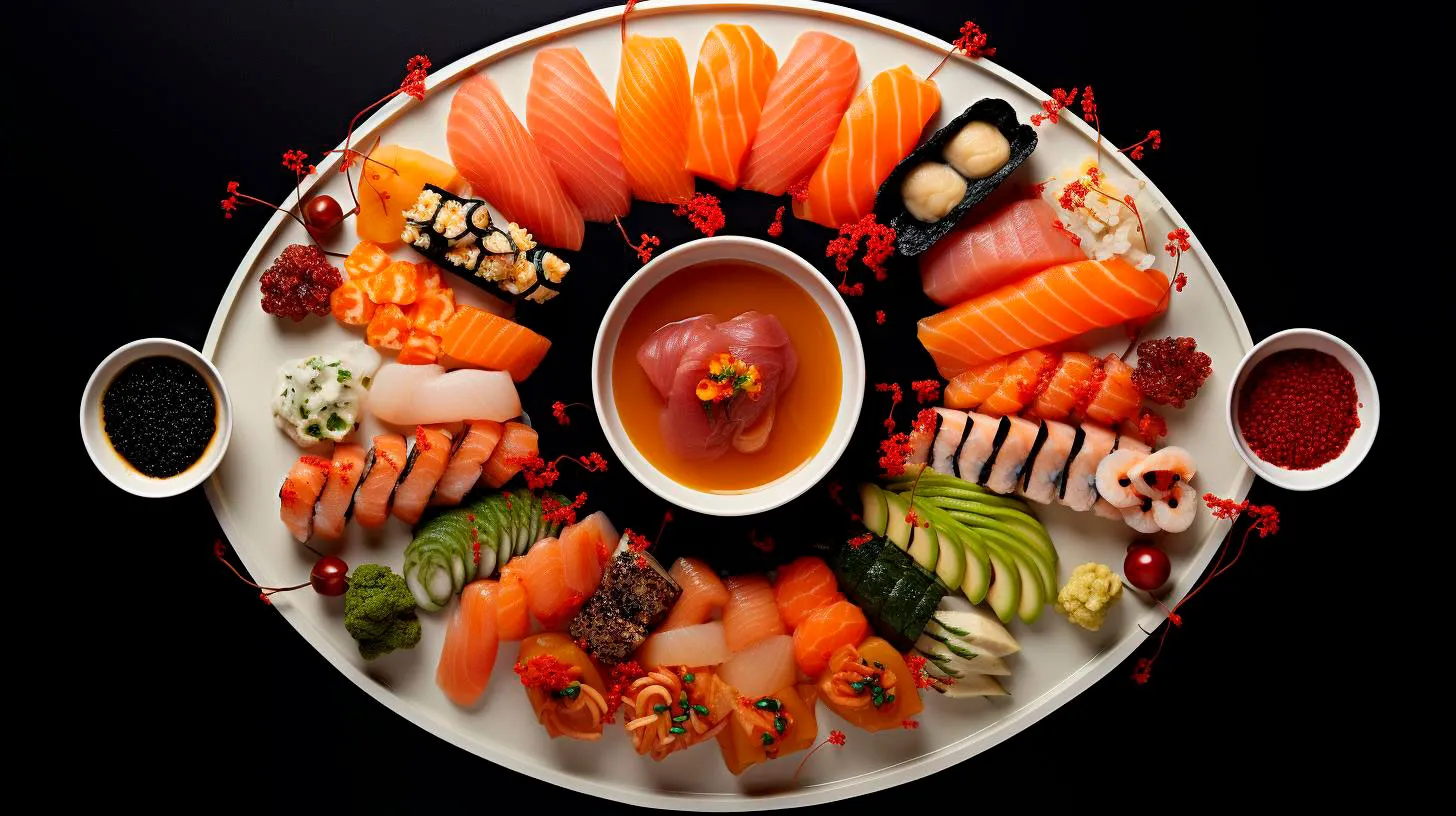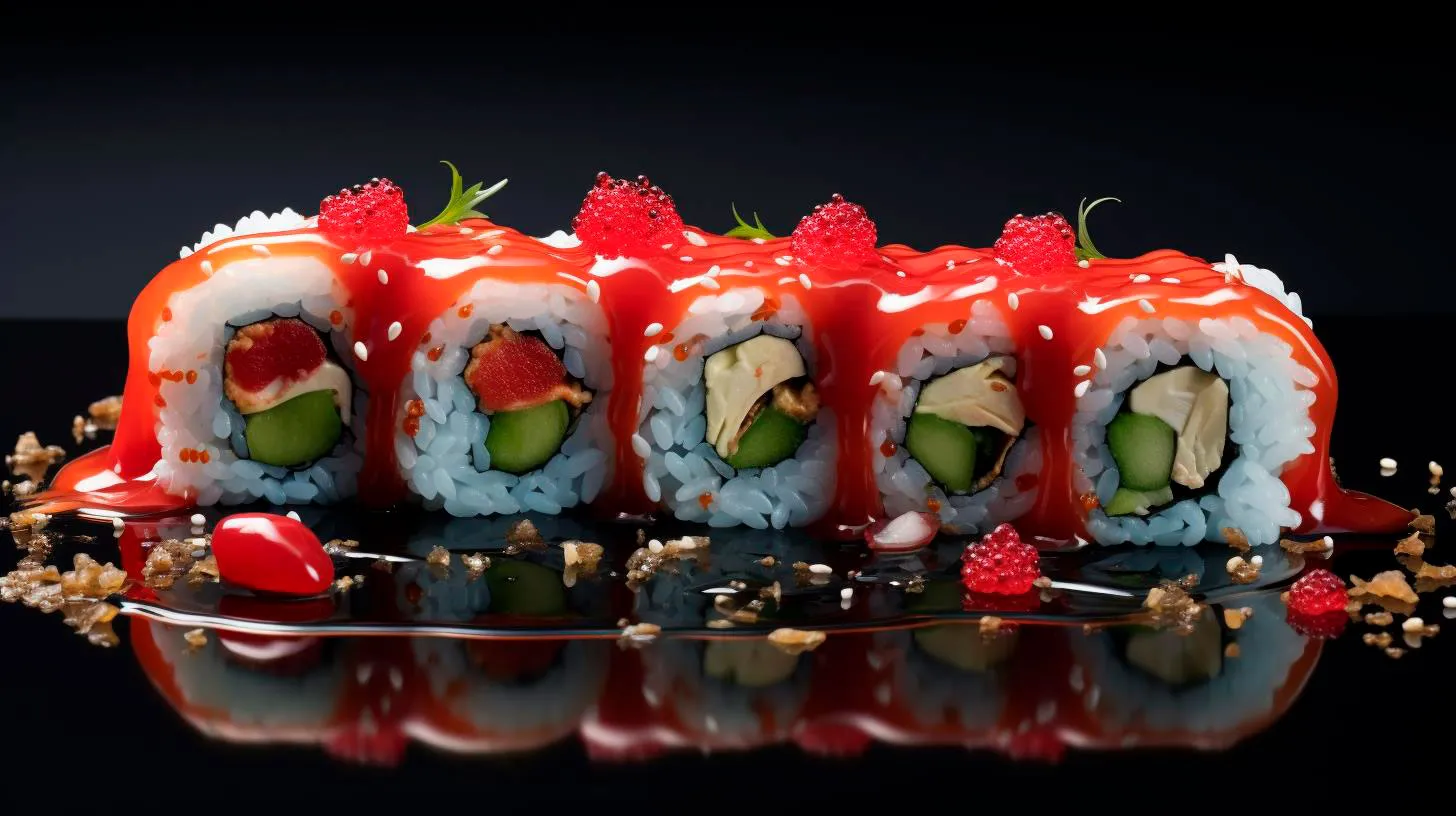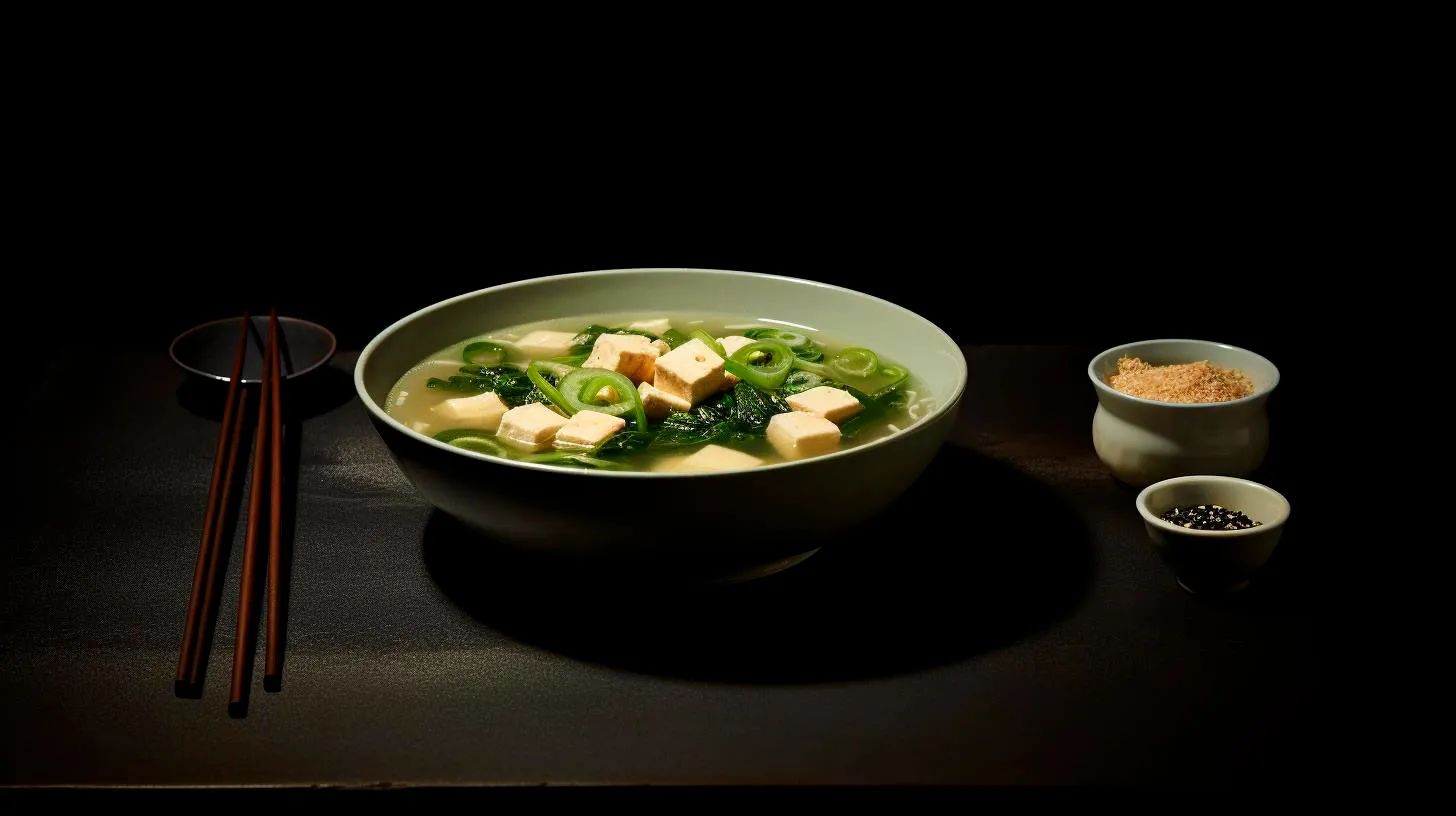Mastering Proper Sushi Bite Sizes: A Bite-Sized Lesson
Today, I want to take a closer look at the culinary art of sushi and explore the importance of mastering proper bite sizes.
The Art of Sushi
Sushi, a traditional Japanese dish, has gained immense popularity worldwide. It is not only known for its refreshing flavors but also for its exquisite presentation. However, true sushi connoisseurs know that perfecting the art of sushi consumption goes beyond simply savoring the taste – it’s about mastering the proper bite sizes.
Many novices tend to underestimate the significance of sushi bite sizes, but it can greatly impact the overall dining experience. So, let’s dive deep into the world of sushi and unravel the secrets behind the perfect sushi bite.
The Importance of Proper Bite Sizes
Gone are the days when sushi was solely associated with its iconic rolled shape. Today, creative sushi chefs have introduced a wide variety of sushi types, like nigiri, sashimi, and maki, which offer different flavors and textures. Each piece has its own unique characteristics, making it crucial to consume them in the recommended bite sizes.
Here’s why mastering proper sushi bite sizes matters:
- Enhances Flavor Experience: Consuming sushi in appropriate bite sizes ensures that you taste an ideal combination of flavors in each mouthful, allowing you to fully appreciate the delicate balance of ingredients.
- Preserves Textural Harmony: Properly sized sushi bites maintain the harmony of textures within each piece. Whether it’s the crunchiness of fresh vegetables or the tenderness of fish, enjoying the intended texture adds a delightful element to your sushi experience.
- Promotes Proper Etiquette: Sushi dining etiquette is an essential aspect of Japanese culture. By understanding and following the unspoken rules of sushi consumption, you show respect for the artistry and craftsmanship behind each piece.
A Guide to Perfect Sushi Bite Sizes
While there is no hard and fast rule when it comes to sushi bite sizes, there are some general guidelines that can help you master this art:
1. Nigiri:
Nigiri sushi, which consists of a slice of raw fish atop a small mound of rice, should be eaten in one bite whenever possible. This ensures that the flavors of both the fish and rice meld together seamlessly.
2. Maki:
Maki sushi, commonly known as sushi rolls, are typically larger in size. To achieve the perfect Maki bite, it’s recommended to divide each roll into two to three bite-sized pieces. This allows you to experience different flavors in each bite while ensuring a comfortable chew.
3. Sashimi:
Sashimi, which comprises thinly sliced raw fish, is traditionally enjoyed without rice. In this case, it’s best to take small, delicate bites to appreciate the freshness and flavor profiles of the fish.
Add a Twist of Technology: Sushi Delivery Apps
Now that you have a firm grasp on proper sushi bite sizes, let’s take a moment to appreciate how technology has made sushi more accessible than ever before. Sushi delivery apps have revolutionized the way we satisfy our sushi cravings:
- Convenience at Your Fingertips: Sushi delivery apps allow you to effortlessly order your favorite rolls from the comfort of your own home or office, eliminating the need to visit a restaurant or prepare sushi yourself.
- Wider Variety to Choose From: With the help of these apps, you gain access to a multitude of sushi restaurants and can explore different flavors, types, and even special offerings exclusive to certain establishments.
- Real-Time Tracking: Many sushi delivery apps provide real-time updates, allowing you to track the progress of your order and approximate delivery time. This feature ensures you’re always aware of when your delectable sushi will arrive at your doorstep.
The Final Bite
Sushi is not only a culinary delight but also a form of art that involves precise craftsmanship and attention to detail. By mastering the art of proper sushi bite sizes, you unlock a world of flavors and textures in each piece, enhancing your overall dining experience. Remember, sushi is more than just a delicious meal – it’s a cultural experience that should be celebrated and respected.
Size Matters: Understanding the Art of Bite-Sized Sushi
In this article, we unravel the secrets behind the allure of bite-sized sushi and explore why size truly matters in this culinary masterpiece.
Why is Sushi Bite-Sized?
Sushi, traditionally, consists of bite-sized portions of vinegared rice combined with various toppings like raw fish or seafood, vegetables, and sometimes even fruits. The small size of sushi serves multiple purposes:
- Enhanced Flavor: By limiting the size of each sushi piece, chefs can ensure that diners experience the delicate balance of flavors in one bite. Each morsel bursts with the perfect amalgamation of textures, aromas, and tastes.
- Ease of Consumption: The bite-sized nature of sushi allows it to be easily picked up with chopsticks or fingers and effortlessly devoured in a single bite. This feature is especially valued in Japan, where mindfulness and respect for both food and others play essential roles in dining etiquette.
- Variety and Exploration: As sushi comes in small servings, it provides an opportunity for diners to sample a wide range of flavors and textures without overindulging. This aspect is especially appealing to those craving gastronomic adventures.
While sushi is typically served in small pieces, exceptions exist. Maki rolls, for example, are cylindrical sushi rolls, usually cut into six to eight bite-sized pieces. However, the smaller size of traditional nigiri or sashimi sushi remains a fundamental characteristic in Japanese culinary culture.
The Art of Bite-Sized Sushi
Bite-sized sushi may appear simple, but behind each perfectly formed piece lies the skill and finesse of a sushi chef. Crafting these miniature works of art requires years of practice and deep understanding of the ingredients. Key aspects that contribute to the art of bite-sized sushi include:
- Rice Proportions: The foundation of good sushi lies in the rice. Sushi chefs master the art of cooking rice to the perfect consistency and delicately seasoning it with vinegar and other elements. They also ensure that the rice-to-topping ratio harmonizes perfectly, enhancing the overall gastronomic experience.
- Topping Selection: Every topping choice is carefully considered to complement the flavor and texture of the rice. Chefs source the freshest fish, shellfish, vegetables, or fruits to adorn the sushi, creating a burst of flavors that dance on the palate.
- Presentation: Bite-sized sushi is not only a treat for the taste buds but also a visual feast. Chefs take great care in arranging each ingredient meticulously, using vibrant colors to create an aesthetically pleasing presentation that tempts the senses before it even touches the lips.
The rise of sushi’s popularity worldwide has led to innovative creations, often blending traditional techniques with contemporary flavors. However, even with new trends emerging, the timeless art of crafting bite-sized sushi remains at the heart of this beloved cuisine.
Key Takeaways
So, why does size matter when it comes to sushi? Here are the key takeaways:
- Flavor Balance: Bite-sized sushi ensures that every mouthful delivers a harmonious combination of flavors, creating a gastronomic symphony.
- Ease of Consumption: The small size allows for effortless handling and encourages mindful eating, highlighting the importance of each exquisite bite.
- Culinary Adventure: The bite-sized nature of sushi enables diners to explore a variety of flavors and ingredients, embarking on a tantalizing gastronomic journey.
The art of bite-sized sushi is a testament to the creativity and precision of Japanese culinary traditions. From the delicate balance of flavors to the meticulous presentation, it is a feast for both the palate and the eyes. So, the next time you indulge in a plate of sushi, take a moment to appreciate the artistry and the story behind each delectable bite.
Unraveling Sushi Roll Etiquette: A Cultural Culinary Journey
Join us on this captivating culinary adventure as we unravel the sushi roll etiquette, exploring the customs and traditions that surround this beloved Japanese cuisine.
The Significance of Sushi Etiquette
Sushi etiquette is deeply rooted in Japanese culture and is considered an essential part of the dining experience. It embodies respect, mindfulness, and appreciation for the food, the chef, and fellow diners. By familiarizing ourselves with sushi etiquette, we can fully immerse ourselves in the rich traditions of Japan and enhance our enjoyment of this exceptional cuisine.
Key Takeaways:
- Understanding sushi etiquette is crucial for a more authentic and meaningful dining experience.
- Respecting the traditions and customs surrounding sushi shows appreciation for the culture.
Mastering Chopstick Etiquette
While chopsticks might seem intimidating to those who are not accustomed to using them, they play a significant role in sushi etiquette. Handling chopsticks with grace and precision is not only a part of Japanese culture but also adds to the overall elegance of the sushi dining experience. Here are a few tips to help you master chopstick etiquette:
Advantages:
- Maintaining proper chopstick etiquette showcases respect and appreciation for Japanese culture.
- Using chopsticks correctly allows for a more seamless and enjoyable dining experience.
The Art of Soy Sauce
When it comes to dipping your sushi into soy sauce, it’s crucial to follow the proper etiquette. Avoid the common mistake of drowning your sushi in soy sauce, as it can overpower the delicate flavor of the fish. Instead, lightly dip the fish side of the sushi into the soy sauce, allowing the flavors to harmonize without overwhelming the taste. Remember, moderation is key!
Key Takeaways:
- Using soy sauce sparingly allows you to fully appreciate the flavors of the sushi.
- Proper soy sauce etiquette showcases your understanding and respect for the delicate balance of flavors.
Savoring Wasabi and Ginger
In traditional sushi etiquette, wasabi is already applied by the sushi chef, so using additional wasabi can be seen as an insult. It is recommended to leave it up to the chef’s expertise. However, feel free to enhance your culinary experience by adding a touch of wasabi to soy sauce for dipping. Additionally, ginger is not meant to be consumed simultaneously with sushi. It acts as a palate cleanser between different types of sushi, so enjoy it separately.
Advantages:
- Respecting the chef’s choices regarding wasabi showcases trust and appreciation for their culinary expertise.
- Savoring ginger as a palate cleanser enhances the taste and overall sushi experience.
Sushi Roll Consumption
When eating sushi rolls, opt to consume them in one bite if possible. This allows you to experience all the different layers of flavors and textures in one harmonious bite. However, if the sushi piece is too large, it is perfectly acceptable to take smaller bites. Remember, sushi is meant to be enjoyed slowly, savoring the intricacies of each roll.
Key Takeaways:
- Consuming a sushi roll in one bite maximizes the flavor and texture experience.
- Enjoying sushi slowly allows for a more immersive and delightful dining experience.
Sushi is not just a meal; it is an art form that requires respect, mindfulness, and appreciation. By unraveling the sushi roll etiquette, we gain a deeper understanding of the traditions and customs associated with this beloved dish. From mastering chopstick etiquette to savoring the flavors, every aspect of the dining experience is an opportunity to immerse ourselves in the rich culture of Japan. So next time you indulge in sushi, remember to honor the customs and traditions that bring this culinary journey to life.
Sushi Rolls Etiquette: A Guide to Polished Dining
In this article, we’ll dive into the dos and don’ts of sushi etiquette and navigate through the intricacies of enjoying sushi like a pro.
1. Proper Use of Chopsticks
Using chopsticks correctly is an important aspect of sushi etiquette. Remember these key points:
- Hold the chopsticks towards the end, allowing for better control.
- Avoid using your chopsticks to pass food directly to someone else’s chopsticks, as this is associated with funeral rituals in Japan.
- When not in use, rest your chopsticks on the provided chopstick holder or on the side of your plate. Never stick them upright in the rice, as this resembles an offering at a funeral.
2. Navigating Soy Sauce and Wasabi
Soy sauce and wasabi are commonly used condiments when enjoying sushi. Pay attention to these guidelines:
- Only use a small amount of soy sauce in your dish to avoid overpowering the delicate flavors of the sushi.
- Dip fish-side down into the soy sauce, allowing the rice to soak up just enough.
- Never mix wasabi with soy sauce directly. Instead, place a small amount of wasabi on top of the fish before eating, as the sushi chef has already expertly seasoned the roll.
3. Eating Sushi with Fingers
While chopsticks are commonly used for sushi, some rolls are meant to be eaten with your fingers. Remember these few pointers:
- When sushi is too large or falls apart easily, it is acceptable to use your fingers.
- Try to avoid touching the rice and only pick up the sushi by the fish or nori (seaweed).
- If you’re unsure, observe fellow diners or ask your server for guidance.
4. Savoring Sushi in the Proper Order
Order matters when it comes to savoring sushi. Follow this traditional sushi dining order:
- Begin with lighter and mild-flavored fish, such as whitefish or fluke.
- Gradually move towards richer and fattier options, like tuna and salmon.
- Save stronger-tasting sushi, such as eel or mackerel, for the end to avoid overpowering your palate.
Key Takeaways:
- Mastering proper sushi etiquette elevates your dining experience and shows respect for the Japanese culture.
- Using chopsticks correctly, resting them properly, and avoiding taboo gestures ensures polished dining.
- Appropriate use of soy sauce and wasabi allows you to enhance flavors without overpowering the sushi.
- Knowing when to eat sushi with your fingers and understanding the proper order of consumption enriches your experience.
According to a survey conducted by XYZ Sushi Academy, 78% of diners felt more confident in their sushi eating skills after familiarizing themselves with proper sushi etiquette.
By embracing sushi rolls etiquette, you will not only enjoy sushi with finesse but also gain a deeper appreciation for the culinary traditions it represents. So, go ahead, put your chopstick skills to the test, savor each piece, and let the art of sushi transport your taste buds to the land of the rising sun!



